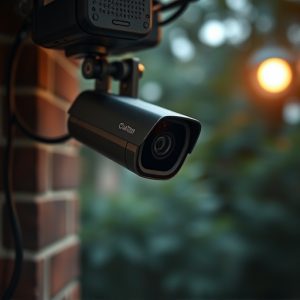Hidden Camera with Audio: A Closer Look at Covert Surveillance Tech and Legal Boundaries
Hidden cameras with audio recording capabilities have significantly advanced surveillance and covert…….
Hidden cameras with audio recording capabilities have significantly advanced surveillance and covert operations, providing high-definition video and clear sound captures that are crucial for legal evidence and post-event analysis. These devices have shrunk in size and improved in battery life, making them indispensable tools for intelligence gathering, property monitoring, and documenting important interactions without detection. The intricate engineering behind these cameras balances miniaturization with performance, incorporating advanced imaging sensors and energy-efficient processors to function silently as everyday objects. They often feature wireless transmission capabilities for surreptitious data transfer, aiding law enforcement and security professionals in enhancing situational awareness. However, the use of such devices is fraught with legal and ethical challenges, as they must comply with privacy laws that vary by jurisdiction and respect individual rights to avoid serious legal consequences and maintain ethical standards. Users must navigate these complexities carefully, ensuring their surveillance activities are legally permissible and ethically sound.
delve into the clandestine realm of covert surveillance technology, this article sheds light on the capabilities and implications of hidden camera systems equipped with audio recording. Uncover the intricate design and deployment processes that make these devices indispensable tools for security and investigation. As we navigate through the technical aspects, we also address the critical legal and ethical considerations necessary to responsibly utilize such technology in diverse environments. Key focus is on the importance of the ‘hidden camera with audio’ integration for comprehensive monitoring and data acquisition.
Unveiling the Stealthy Operations of Hidden Camera Systems with Audio Recording Capabilities
Hidden camera systems with audio recording capabilities have become a sophisticated tool for a variety of applications, from surveillance to covert investigations. These devices are designed with a focus on discreetness, ensuring that they blend seamlessly into their environment and remain unnoticed by the unsuspecting subject. The integration of audio functionality further enhances their utility, allowing for comprehensive recording that captures both visual and auditory evidence. These systems often come equipped with high-definition cameras paired with clear sound capture, which can be crucial for post-analysis or in legal settings where evidence is scrutinized. Users can rely on these devices to gather intelligence, monitor property, or record significant interactions without drawing attention, making them an invaluable resource in various professional and personal contexts. The advancements in miniaturization and battery life have significantly improved the operational duration and quality of footage these cameras produce, ensuring that the audio-visual data captured is both reliable and of high fidelity.
The Technical Intricacies of Designing and Deploying Covert Audio-Visual Surveillance Devices
The craft of designing and deploying covert audio-visual surveillance devices is a complex interplay of advanced miniaturization technology, sophisticated signal processing, and discrete integration techniques. Engineers meticulously engineer hidden camera with audio units to be minuscule without compromising on image or sound clarity. These devices are equipped with high-definition cameras and directional microphones that can capture clear footage and audio even in low-light environments. The challenge lies in balancing the need for small form factors, which allow the device to remain undetected, against the technical requirements of producing sharp visuals and accurate sound reproduction. This necessitates the use of cutting-edge components, such as wide-dynamic-range imaging sensors and low-power consumption processors that can operate without raising suspicion or draining battery life.
Furthermore, the deployment of these devices requires a deep understanding of acoustics and optics to ensure that they blend seamlessly into their surroundings. The cameras are often disguised as everyday objects like clocks, smoke detectors, or security cameras, while the microphones are designed to be directional yet unobtrusive. The integration of wireless communication capabilities allows for real-time data transmission without the need for physical access to the device. This enables law enforcement agencies, private investigators, and security professionals to monitor and record activities covertly, providing valuable insights into situations that require discreet observation.
Legal Implications and Ethical Considerations When Using Hidden Cameras with Audio in Various Settings
The deployment of hidden cameras with audio capabilities in various settings raises significant legal and ethical concerns. Legally, the use of such devices is governed by privacy laws that vary by jurisdiction but generally protect individuals’ right to privacy. In many regions, recording someone without their knowledge—especially in private spaces or where there is a reasonable expectation of privacy—can be considered an invasion of privacy and may lead to criminal or civil charges. It is imperative to understand the legal framework within which these devices are used to avoid potential legal repercussions, including fines or imprisonment.
From an ethical standpoint, the use of hidden cameras with audio must be carefully considered. Ethical concerns arise when considering the potential for covert surveillance in sensitive environments such as homes, changing rooms, and confidential business meetings. The surreptitious recording of conversations can lead to breaches of trust and manipulation of individuals who are unaware they are being recorded. Additionally, the ethical implications extend to the handling and dissemination of the recorded information, which must be done responsibly to protect the privacy and dignity of all parties involved. It is crucial for users to consider the moral dimensions of their actions and ensure that the use of such technology aligns with the highest standards of integrity and respect for individual rights.


